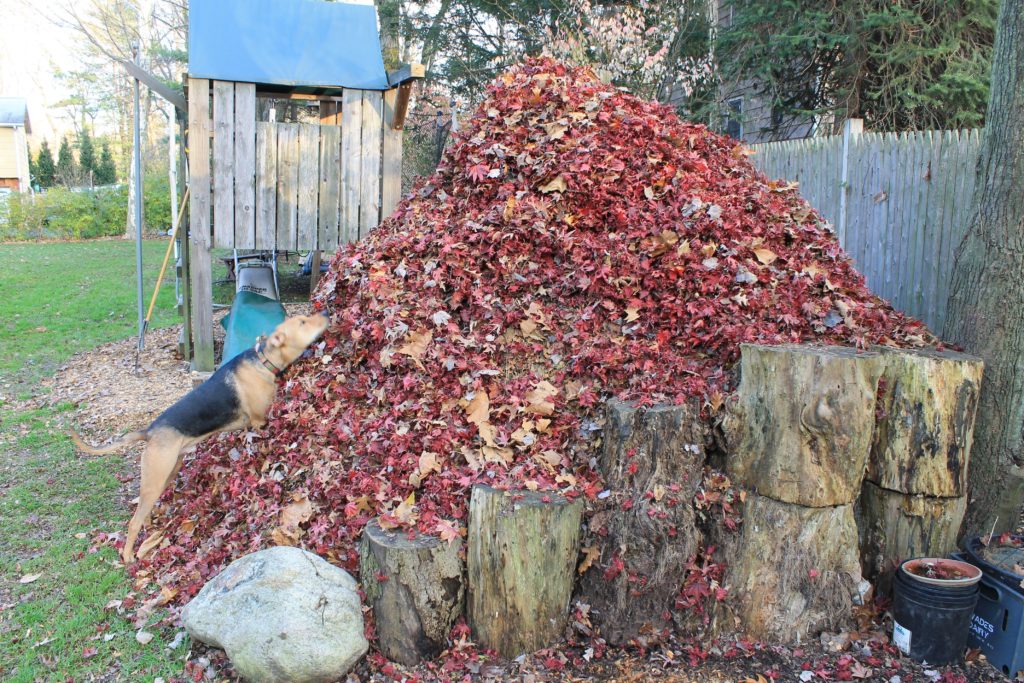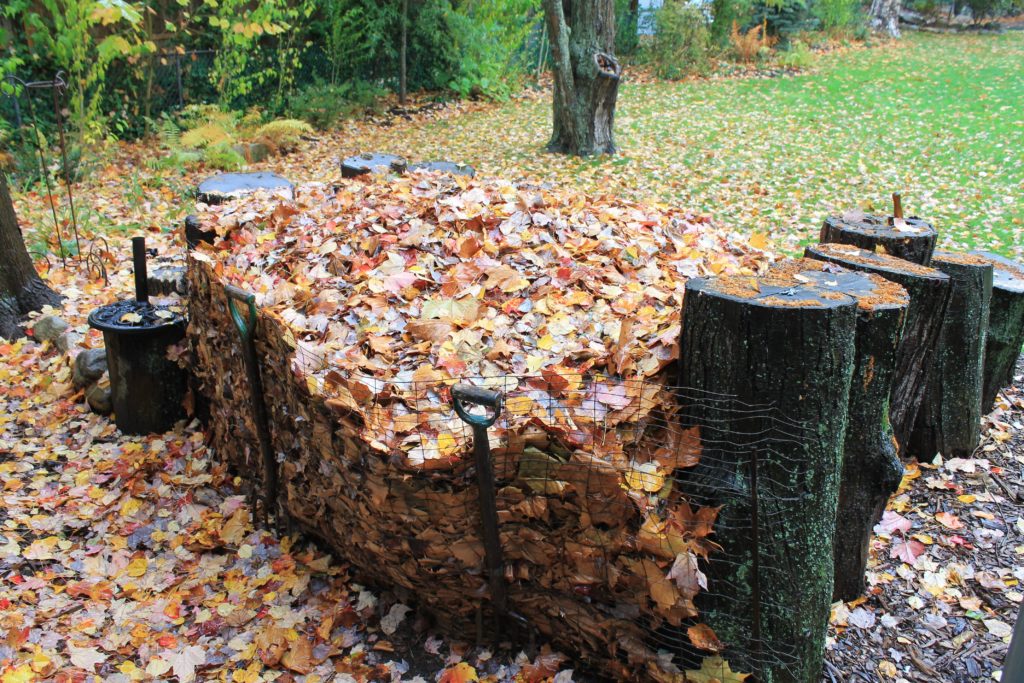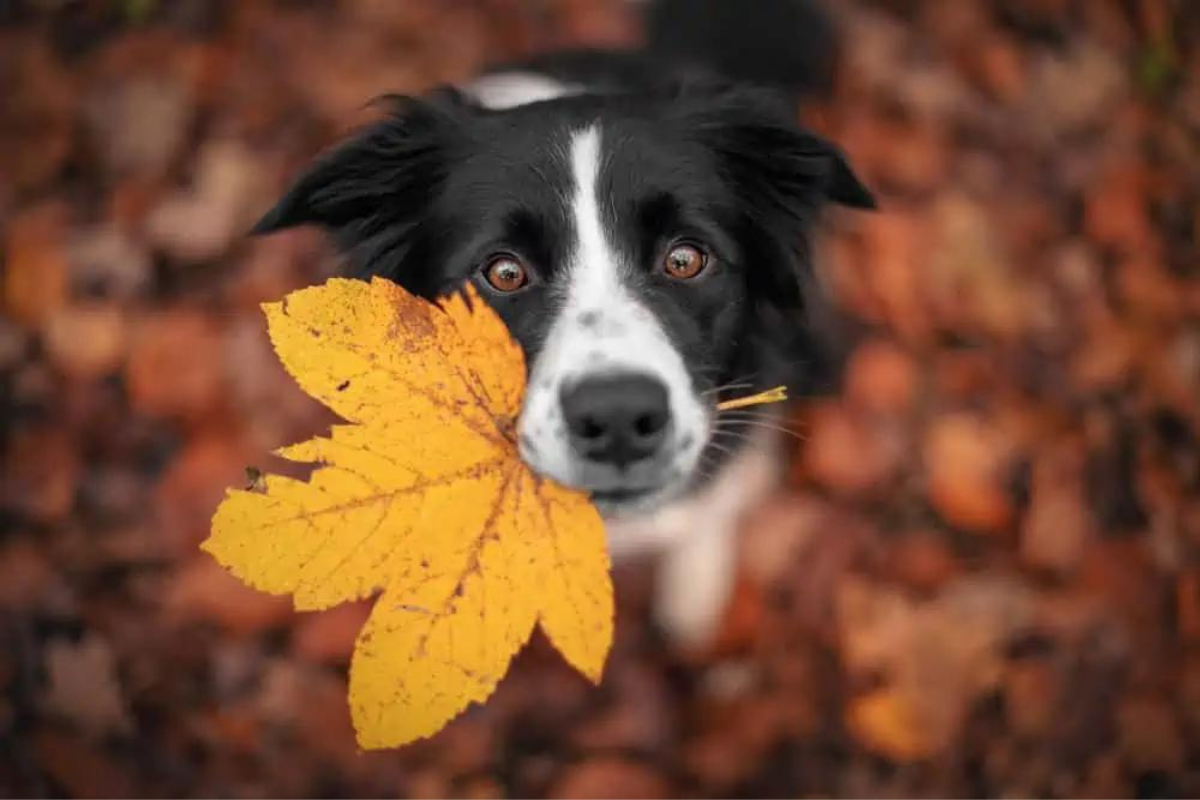by Scott Smith, Communications Director
One of the pleasures of living in the four-season climate of Connecticut is leaf-peeping season, with its kaleidoscopic display of autumn colors.
As a dedicated backyard gardener, I also can’t wait for the trees to shed their foliage, for I see each falling leaf as a bank slip of carbon and other minerals and nutrients, just waiting to be deposited as new gains over the coming year.
With several large trees on my small suburban yard – among them oak, maple, sycamore and hickory – I have a bountiful crop of leaves each fall to put to good use. Some I leave intact atop the garden beds of perennial flowers and flowering trees that ring the property, giving cover to both the ground and any number of beneficial insects and pollinators that need to shelter for the winter. More I mulch as I mow, “grasscycling” the fresh green clippings and the crinkly brown leaves back into the lawn to recharge the turf and eliminate the need for store-bought chemical fertilizer next spring.

The rest I sweep from the yard, driveway and street to add to the compost heap I keep in the corner of the backyard. Why spend the weekend stuffing leaves into big brown paper bags or paying someone to “blow ‘n’ go” them all away when you can use them to help create a batch of new living soil that’s great for the garden – and environment?
I’ve already tossed the spent tomato vines and other plantings from the vegetable garden onto the bare ground of the compost heap – a rustic, three-sided enclosure formed by two log walls (from a rotted maple downed by a storm several years ago), with a length of wire fence along the back. The tangled mess of stalks and stems will provide an airy base for the crush of leaves to come.
To speed the decomposition process, a compost pile should have a ratio of three to four parts “browns” – leaves, straw, shredded paper and such – with one part “greens.” Depending on where you live, this can be all kinds of rottable organic matter, from grass clippings to horse manure, seaweed and more. Coffee grounds, a rich source of the nitrogen that fuels plant growth, is free for the taking via Starbucks’ Grounds for the Garden program, for instance.
But for most of us, the catalyst to turn a pile of mostly old dead leaves into compost is food waste. And, boy, do we waste a lot of food! Numerous studies have shown that as much as 40% of the food produced each year ends up being thrown away, whether it’s left on the farm, thrown out at past due at the supermarket, tossed from the back of the fridge or scraped uneaten off the plate into the trash can or garbage disposal. There’s waste, too, from all the energy used to grow, process and ship the food, not to mention the effort to truck off the spoilage to be buried or burned.
I put any uneaten or spoiled food in a lidded bucket in the kitchen, along with the grounds and filters from the morning coffee, and mix it in weekly with the leaves. I also get a steady supply of kitchen scraps from the next-door neighbors, a family of six, so over the course of a year I add hundreds of pounds of food waste to the heap, diverting all of it from going to a distant landfill. Since food – and dried leaves, for that matter – is mostly water, the whole lot cooks down considerably. Taboo for any compost pile are meat scraps and bones, but if you follow a plant-based diet you’re already in good shape on that front; meat can attract rodents and other pests and may harbor pathogens. Other compost no-no’s are cat litter and dog poop.

If you live in bear country or lack space or spousal approval for an “open” pile, consider buying or DIYing a more secure, enclosed compost bin. If you want to speed up the composting process, a tumbler type container is a good option. My across-the-street neighbors purchased a smart-looking 55-gallon dual chamber tumbler this fall, and look forward to producing their first batch of finished compost in as few as six weeks. Otherwise, given the cold New England winters that slow things down, it takes six months or more to turn a heap of leaves spiked with regular additions of greens and grounds from the kitchen into usable compost. By mid to late summer, I spread mine across the vegetable garden and tuck more shovelfuls around the perennial flowers and water it all in to give the veggies, herbs and blooming flowers a burst of growth and to keep weeds at bay.
Mature compost, more properly known as humus, is technically not quite a fertilizer, but it does wonders to enrich the soil. It’s loaded with nutrients essential for healthy plant growth and teems with beneficial organisms, like worms and the mycelium of the many kinds of fungi that are key to the decomposition process. The porous mixture aids water retention and is home to microbes that help suppress pathogens in the soil. And while some CO2 is released as the raw compost cooks (steam vapors rising from a heap on a frosty morning is a sight to warm the heart of any composter), the bulk of a season’s growth of leaves and organic gleanings from the kitchen and beyond are returned to the ground as a soil amendment rich in stored carbon and nutrients plants need.
In the United States alone, due to poor farming practices, deforestation and over-development, soil is disappearing 10 times faster than it is being naturally replenished, according to a Cornell University study. We have a lot of work to do to turn that sad state of affairs around, and a homegrown compost heap is a modest but effective backyard solution to that and other pressing environmental concerns.
Mark Twain had it partly right when he said, “Buy land, they’re not making it anymore.” Land is indeed precious, and with composting, you really can make more of it—and healthier land at that.

